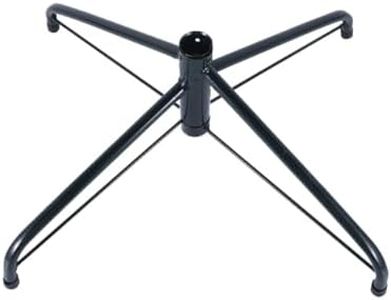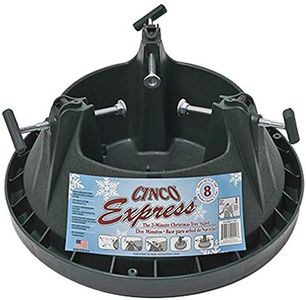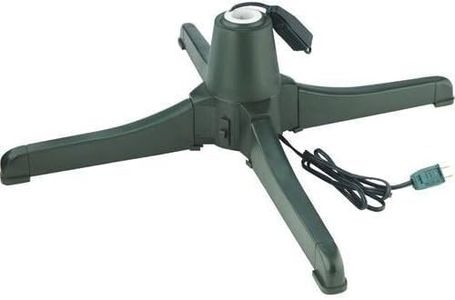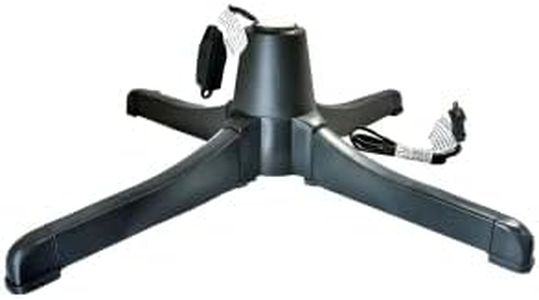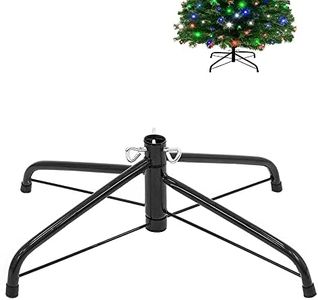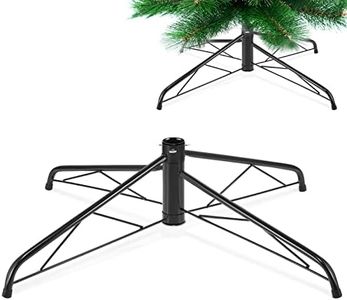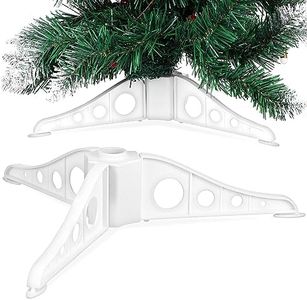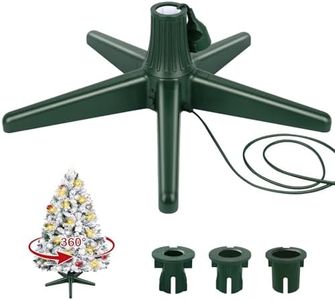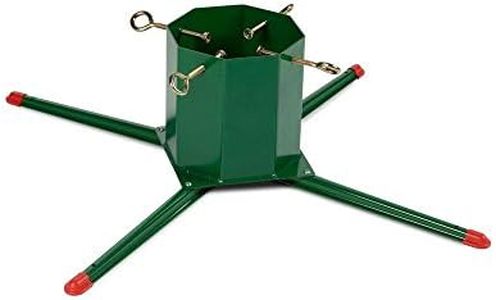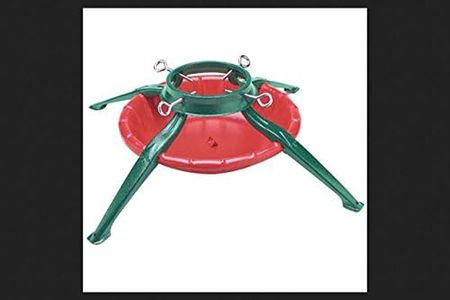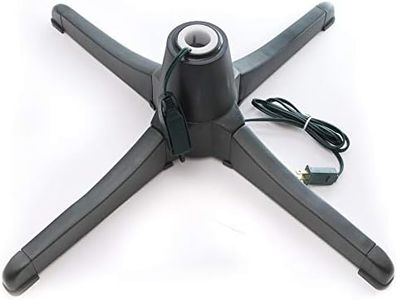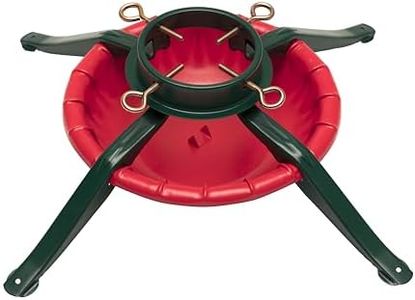We Use CookiesWe use cookies to enhance the security, performance,
functionality and for analytical and promotional activities. By continuing to browse this site you
are agreeing to our privacy policy
10 Best Rotating Christmas Tree Stand
From leading brands and best sellers available on the web.Buying Guide for the Best Rotating Christmas Tree Stand
Choosing a rotating Christmas tree stand can add a dynamic, festive touch to your holiday décor by allowing your tree to spin gently and show off all its decorations. To find the best one for your needs, focus on how well it fits your tree's size and weight, the smoothness of its rotation, and its ease of use. Don’t forget to consider important safety features and make sure it’s compatible with your home and decorating plans. Thinking carefully about your space, your tree, and how you want your display to look will help you pick the right stand.Weight CapacityWeight capacity refers to the maximum weight the rotating stand can safely support. This includes the tree itself as well as all ornaments and lights. If your stand is rated for too little weight, it may not turn smoothly or could even become dangerous. Typical categories are light use (for small artificial trees up to about 50 pounds), moderate use (for medium artificial or real trees up to around 80 pounds), and heavy-duty (for large, real trees or elaborate decorations up to 150 pounds or more). To choose the right one, check the weight of your fully decorated tree and ensure the stand can handle it comfortably, always opting for a little extra capacity for peace of mind.
Tree Trunk Size CompatibilityTree trunk size compatibility means the range of trunk diameters the stand can hold securely. This is important because a trunk that is too large won’t fit, while a very slim trunk may wobble or lean. Stands usually specify a trunk size range in inches. Smaller stands might accept trunks up to 1.5 to 2.5 inches, while larger ones can handle diameters of 3 to 5 inches or more. To pick the right stand, measure your tree’s trunk and compare it to the manufacturer's recommendations, ensuring it will fit snugly.
Rotation Speed and DirectionRotation speed refers to how fast the stand turns the tree, commonly measured in revolutions per minute (RPM). Some stands have just one speed, while others provide options for slower or faster spins, and sometimes even reversible rotation. Very slow rotation (about 1 RPM) is best for a calm, subtle effect, while higher speeds (2-3 RPM or more) give a more noticeable motion. Choose a stand with the option that matches your preference for movement: a slow turn for a peaceful ambiance or a quicker pace for maximum visual effect. Direction control may be fun if you want the tree to alternate its spin.
Noise LevelNoise level describes how much sound the stand’s motor makes while spinning. Quieter stands are less likely to disturb your holiday gatherings or interfere with conversations, music, or movies. Noisy stands might be distracting, especially in quiet rooms. While quiet operation is always preferable, consider your own tolerance: if the stand is in a busy common area, a little hum may not matter, but for a peaceful living room or bedroom tree, opt for quiet or 'silent' models.
Stability and Safety FeaturesStability and safety features keep the tree upright and prevent tipping or slipping as it rotates. This includes a wide base, non-slip feet, locking mechanisms, and secure trunk grips. Safety features might also include overload protection or automatic shut-off if weight or imbalance is detected. Larger trees or homes with kids and pets benefit from extra-stable, safety-focused stands. If you have an energetic household or a high-traffic area, prioritize these features for peace of mind.
Water Reservoir (for Real Trees)If you use a real tree, a built-in water reservoir lets you keep the tree hydrated while it’s displayed. The size matters: a bigger reservoir means fewer refills, which is especially useful for large, thirsty trees. Pay attention to reservoir capacity and how easy it is to access for refilling. If you use artificial trees, this feature is not necessary, but if you do have a real one, it’s vital for tree health and needle retention.
Power Source and Cord LengthMost rotating stands require electricity, so the power source and cord length can affect where you can place your tree. Some stands have longer cords that give you more flexibility, while others require an extension cord to reach outlets. If your desired tree location is far from a plug, make sure the stand’s cord is compatible with your setup, and check if it safely supports lights being plugged into it as well.
Ease of Assembly and UseEase of assembly and use means how simple it is to set up the stand and operate the rotation. Some stands are tool-free and intuitive, while others require more time or effort to get started. Consider stands with clear instructions and straightforward controls, especially if you plan to set up the tree by yourself. If convenience and quick set-up are important, look for models known for their simplicity.
